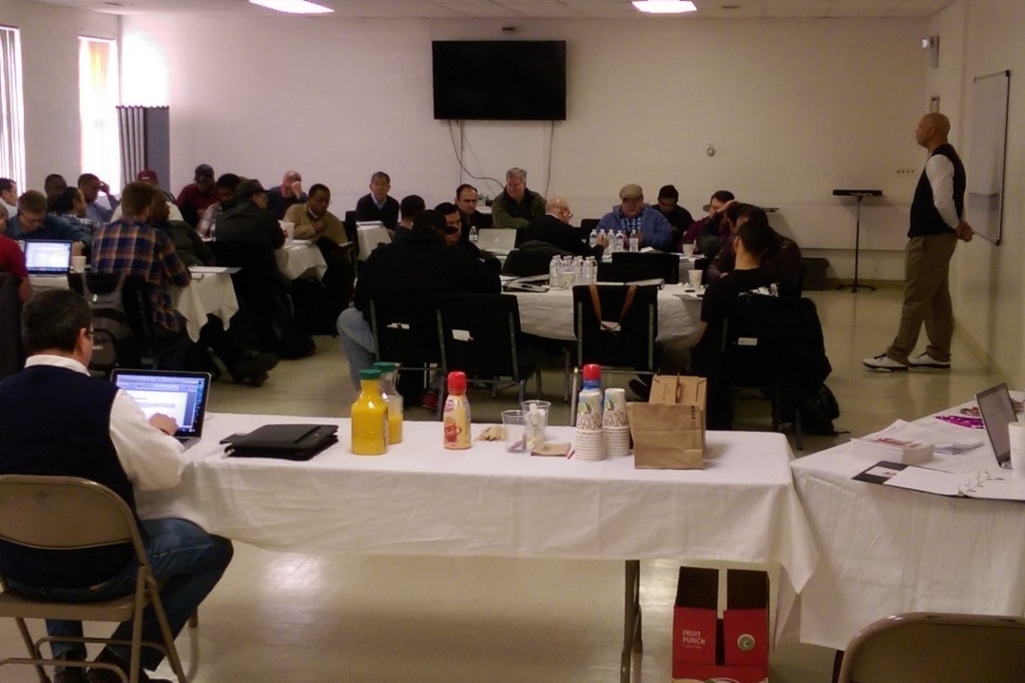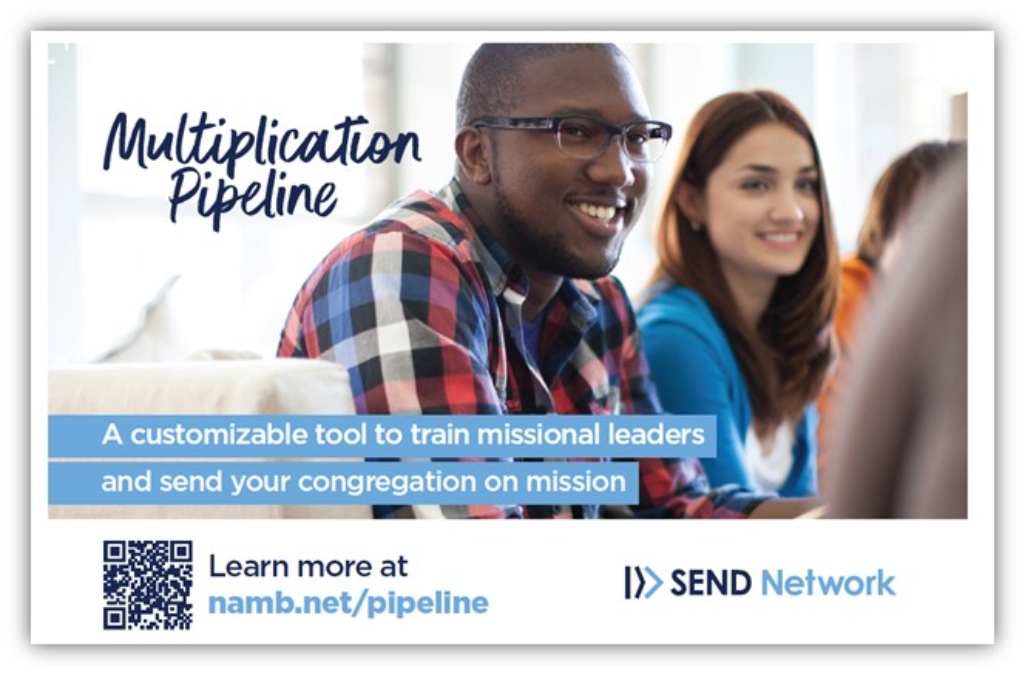
Marcus Redding can easily tell you the first time he remembers being in the same room with someone as they turned their lives over to Christ. He remembers because he has never been the same since.
A new believer himself, 18-year-old Redding watched as his visitation partner, Harry, shared Christ with a 40-year-old in his home.
“All Harry did was share his story,” Redding said. “Harry had lived a tough life, had been through a lot. But God saved him. As he told his story, I saw tears stream down on the other man’s face as the Spirit of God just sat down on that guy’s life. I saw God do for the first time in someone else’s life, what he had done in mine. Then the fire of evangelistic zeal was ignited in my life.”
Redding’s parents were committed Christians, but the subject of gospel witnessing in the home was buried under a set of evangelism-hindering doctrines. Redding didn’t even have a vocabulary to define what God was doing in the man who was saved that night.
Since that night four decades ago, Redding has trained hundreds to tell people about Jesus and help them grow into disciples. At the heart of his calling has been multiplication, replicating missional leaders who are passionate about Jesus and sharing the good news with others. Redding, who serves as the bi-vocational pastor of Salem Baptist Church in Lincolnton, now leads a North American Mission Board (NAMB) team that helps churches continent-wide to multiply leaders in their own contexts.
At the heart of this effort is NAMB’s multiplication pipeline, which is an online training system designed to help local churches discover and develop leaders and church planting missionaries. The system includes up to three years of content that trains leaders in more than 20 ministry leadership competencies. While the training is sequential, it’s designed to be flexible so churches can make it their own.
While other tools help churches train leaders-to-be, NAMB’s multiplication pipeline focuses on missional skills.
“This tool is specifically designed to help individuals live on mission and help them to help other people live on mission,” Redding said.
The tool trains leaders holistically, focusing on what learners need to know, how that learning should shape them and how they put into practice what they’re learning. The training includes content on everything from spiritual formation to biblical fluency to making disciples of others to the skills involved in church planting.
Yet the training is also completely adaptable so churches can use it as is or change it to fit their particular ministry context.

“Our pipeline is built on a coaching platform,” Redding said. “In other words, if you’re going through the material and I’m your coach, I talk you through questions that have already been laid out (although I can adapt them if I’d like). Unless I have that system in place, I have no earthly idea what you know about living on mission and what you’re doing to live on-mission.”
In many ways, the tool replicates conversations Redding has had countless times as a pastor since that day as an 18-year-old when God ignited his evangelistic zeal. As he discipled church members, he would coach them about how to study the Bible, share their faith, lead others and often how to pursue a ministry calling.
“In those days, I was the tool,” the North Carolina Baptist pastor said. “I was able to contextualize the process based upon the needs of the individual. I did it intuitively. I don’t know how God did that. He just wired me like that. I think it was some of the things I had to learn because I was so confused doctrinally and denominationally. Because I had to walk through that journey by myself. But a lot of pastors don’t have those tools. That’s not a criticism, but when you’re raised in that atmosphere you take it for granted. You don’t realize it doesn’t make sense to the guy you’re discipling because he didn’t grow up in it.”
The tool, Redding says, is something that can be duplicated.
“You can’t make another Marcus Redding, but I can give you some of the tools and you now have a strategy that you can contextualize,” Redding said.
Redding and his team are using these tools to help churches build their multiplication pipelines. They’ve seen success in both large and small churches.
Redding points to one large church that recently celebrated its 150-year anniversary. During that time, the pastor felt God’s call to lead the church to plant 150 churches in the next 20 years: across the street, throughout the country and around the world.
“God put that burden on the pastor’s heart,” Redding said. “The multiplication pipeline became the tool so the pastor could say: ‘God has given me this vision. If God stirs you to take the step to fulfill that vision, let us know because we have a process to help you get there.’”
At first, the church used the pipeline as it had been designed, but in time they tweaked it for their own context.
Redding also points to a small church in Mississippi as another example. The church’s associate pastor had explored the NAMB’s multiplication pipeline as a tool for his own missional growth, but he soon used it to disciple others. Through that discipleship experience, the church recently deployed a former military and police officer to Canada to plant a church.
“This isn’t a big church with a big process and a bunch of targets on a map,” Redding said. “This is a single guy that had a missions pastor who was willing to work with him. And now they planted a church in another country. It came through this multiplication pipeline.”
Redding and his team’s work and the multiplication pipeline tool are provided to Southern Baptists free of charge thanks to their support of the Cooperative Program. To learn more about the multiplication pipeline, visit namb.net/pipeline.
(EDITOR’S NOTE – Tobin Perry is a freelance writer with more than 20 years of writing experience with Southern Baptist organizations. He can be reached at TobinPerry.com.)


